

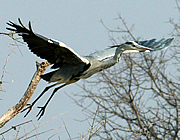
We loved the waterhole at Onguma where animals and birds came and went and a grey heron spent all day. We were also lucky to see a young black rhino on one of the game drives.
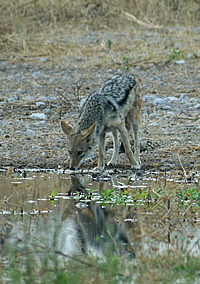
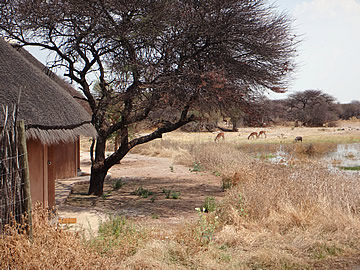
Driving out of Etosha we almost immediately turned left into the Onguma reserve heading for Onguma Bush Camp. It was quite late in the day and we were very tired after a day driving through Etosha.
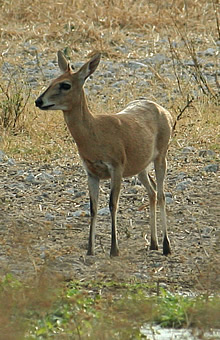
Our rondavel/chalet was right on the waterhole so we sat outside for an hour or so watching impala, a jackal and lots of birds. So peaceful just to sit in the quiet of the evening and watch the animals come and go.
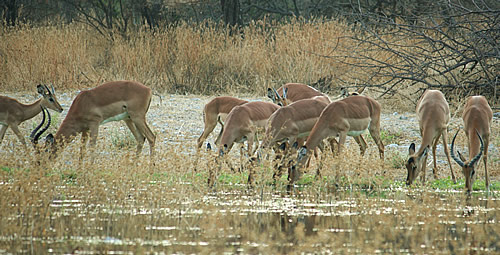
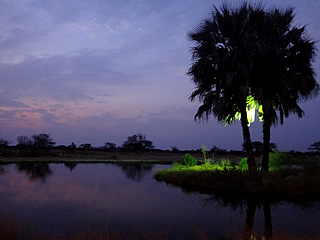
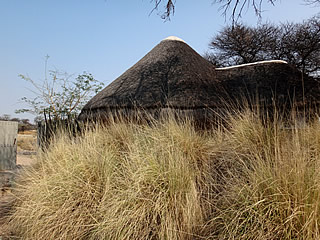
A shower before very welcome G&Ts and a very nice dinner. The restaurant is open-sided and also overlooks the waterhole which is quite large.
And so to bed - the frogs were very loud but couldn't stop us from going straight to sleep!
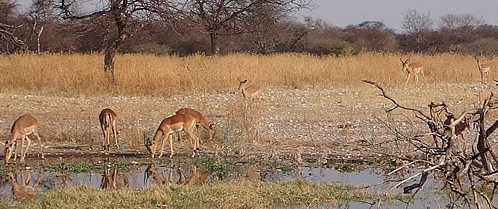
We had had a fairly intensive time since our arrival in Namibia and so today we decided to recuperate a little before setting out in the early evening for another game drive.
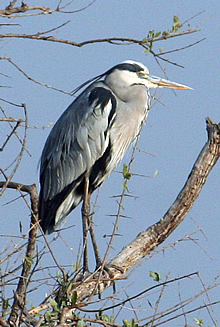
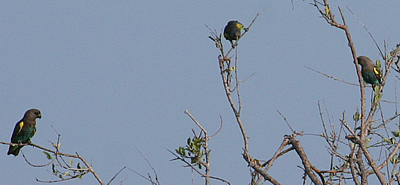
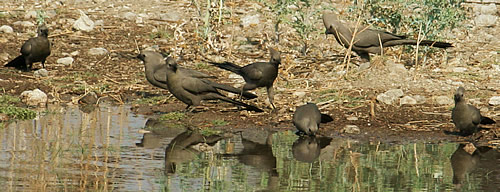
We spent the day sitting by the waterhole, with cool drinks, just watching the wildlife. A heron was particularly entertaining. He came early to his perch above the water (I saw him fly in the following day) then he, too, spent the whole day there, with occasional forays to the waterside to catch a fish.
In fact this was a good opportunity to see more birdlife. That morning we had seen a fabulous crimson-breasted shrike just outside the chalet! There were many beautiful parrots, iridescent blue guinea fowl, noisy Grey Go-Away Birds and trees full of Cape Glossy Starlings.
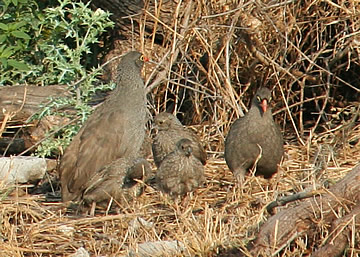
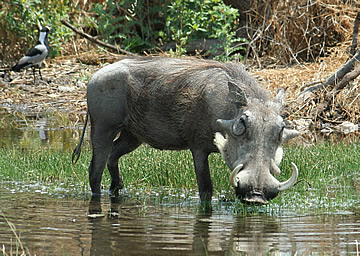
We saw warthog here for the first time, at the waterhole right in front of our chalet. They look very aggressive so I was a bit wary of them but they never showed any interest in us, even as we went in and out of the chalet quite close to them.
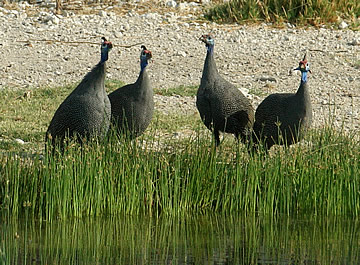
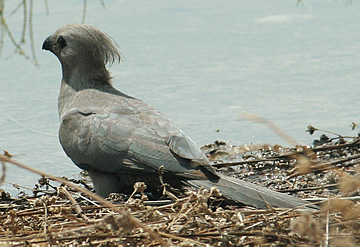

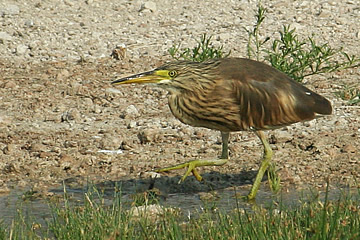
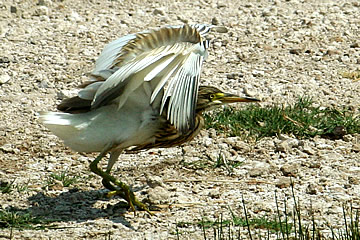
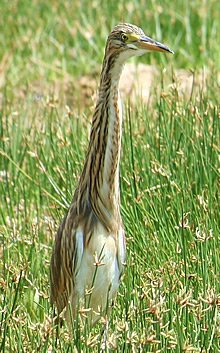
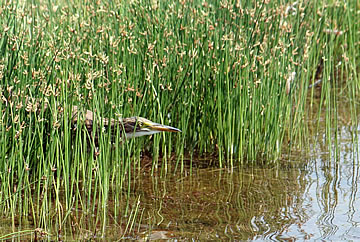
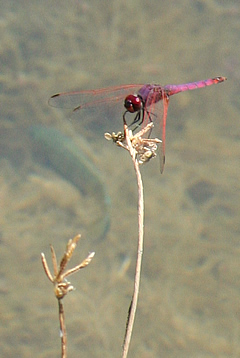
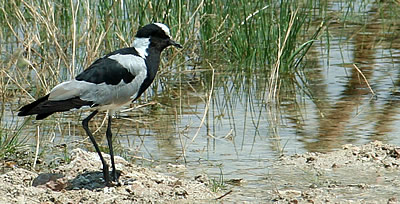
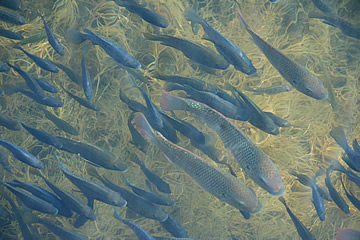
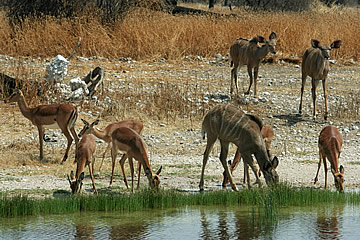
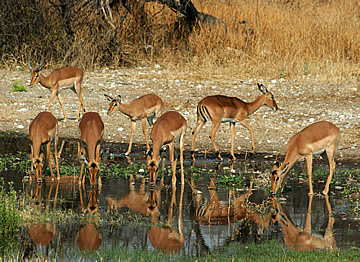
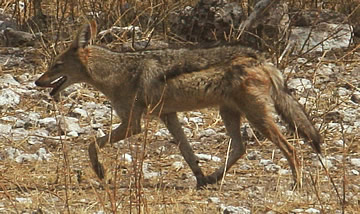
We really enjoyed watching the wildlife at the waterhole. A lunch of toasted ham & cheese and chicken & caramelised onion & roasted vegetables and Tafel beer was very good, served just where we were sitting at the edge of the shaded deck. Around 2pm the sun started to come round and it got a bit too hot to stay where we were so we followed the lead of the animals and disappeared - in our case back to our cool room to rest.

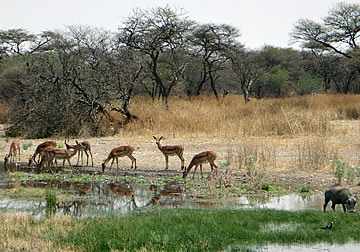
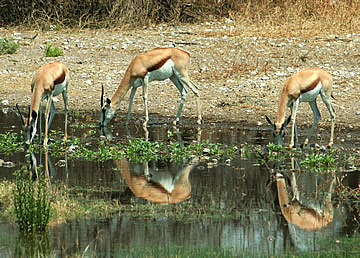
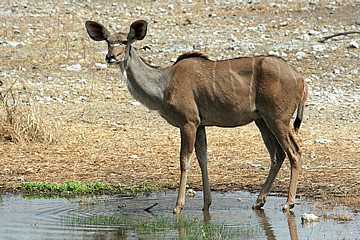
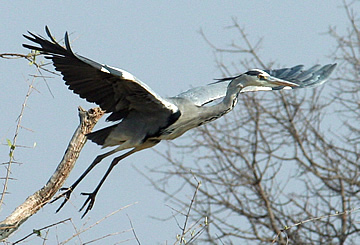
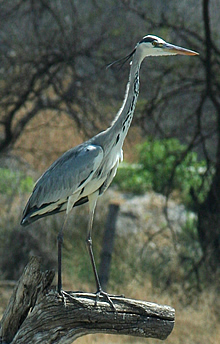
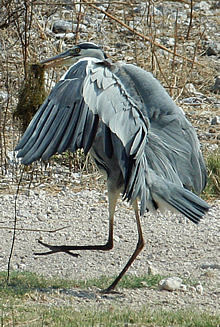
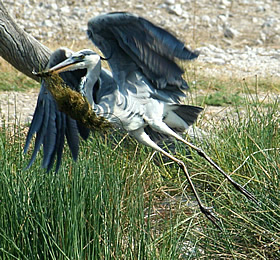
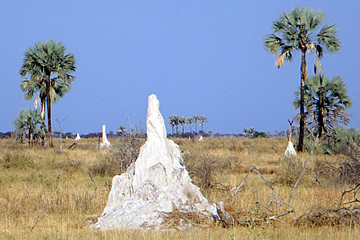
At 4pm it was time to go for a game drive. As we drove out into the bush we were again passing through a very dry landscape with palm trees and stark white termite mounds.
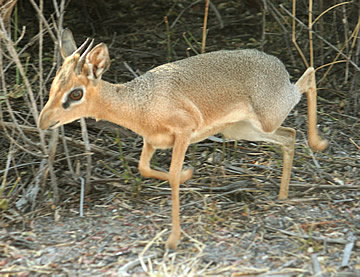
As well as many of the beautiful animals we had seen on previous drives, such as wildebeest and giraffe, we saw two we hadn't seen before - a duiker and a Damara Dik Dik. The dik dik in particular was a beautiful creature with huge eyes. They are one of the smallest antelopes growing only to between 30 and 40cm high.
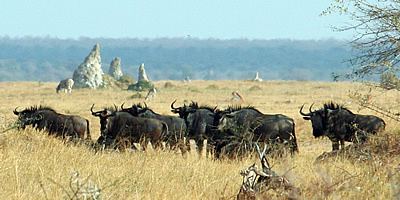
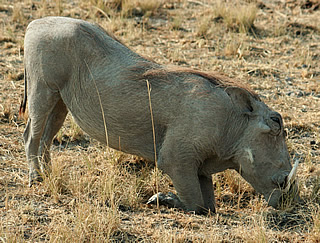
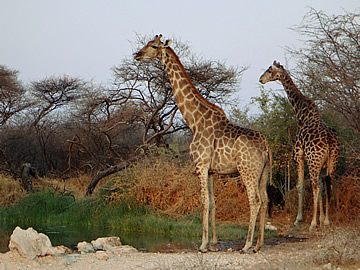
We even saw a nice big bull elephant through the Etosha fence - there are no elephants on the Onguma side, apart from those which occasionally break down the fence!
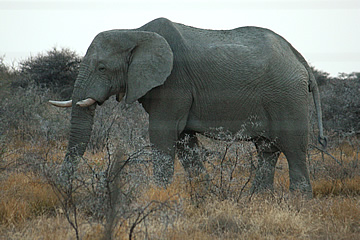
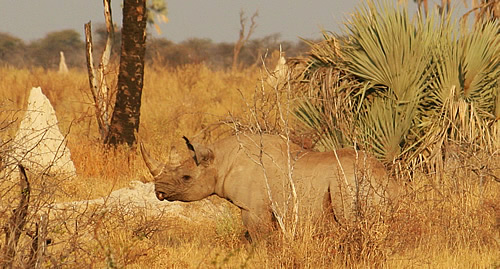
We were very lucky to come upon a lone young male black rhinoceros - we were very close to him and could easily see the pointed upper lip which distinguishes this species from the white rhinoceros which has a square upper lip. These impressive creatures are endangered, being poached for their horn.
It was a bit ironic that the dedicated rhino-spotting vehicle had headed off deep into the bush. As elsewhere the drivers communicate if they spot something interesting so they were heading back as fast as they could. The rhino was very nearly scared off by another vehicle which came up too fast.
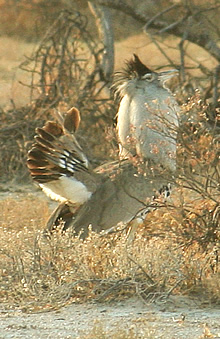
Another highlight was a magnificent male Kori Bustard in the middle of a spectacular courtship display, fluffing out his neck feathers, lifting his tail feathers up between his wings - he was magnificent.We saw many of these birds, though only the one displaying male. They are an extremely big bird, very heavy, but near-endangered because of various threats, not least high voltage power lines which they fly into.1
We finished the drive with an extremely good sundowner: G&Ts served with samosas and sausage rolls!
After dinner we set out on a night drive. We'd been told by people we'd met that this was a great thing to do but we didn't find it so. It lasts for about 90 minutes and involves a spotter sitting beside the driver trying to spot animals. There were five or six of us on the drive and I think we were all hoping to see a big cat but it was not to be. In fact I'm surprised that anything is ever spotted as the vehicle goes along at some speed making a lot of noise. That plus the headlights and the swinging lamp would, I think, be enough to scare most animals off.
There were antelope, zebra and jackals, though all at some distance. The Spring Hares were nice, with their long tails and kangaroo-like hop. Also saw Bat-Eared Foxes, a lone hyena (nasty-looking creatures) and rabbit. The smaller animals all try to get away as fast as possible and it seems a bit cruel to pursue them with the bright beam of the lamp. Of course it's impossible to take photographs.
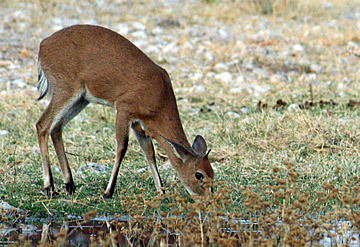
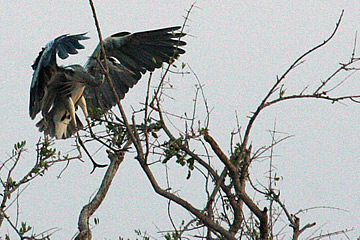
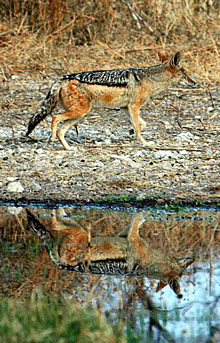
The following morning we rose early to a very peaceful calm morning, with animals and birds beginning to arrive at the waterhole.
These included a duiker - we'd seen one yesterday but deep in bush. This one was out and drinking at the waterhole which was really lucky as they are notoriously shy and elusive.2
Another (or the same?) jackal passed purposefully by and the heron flew in for another day above the waterhole.